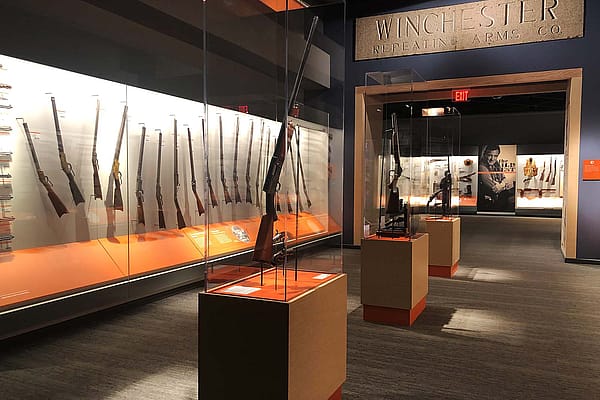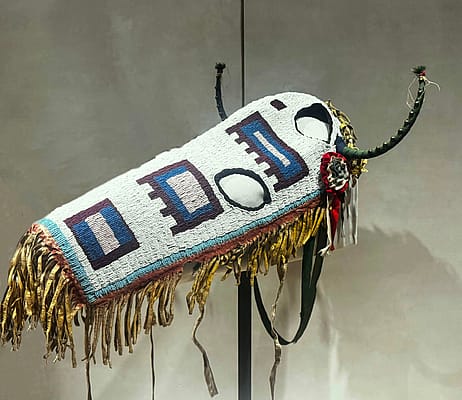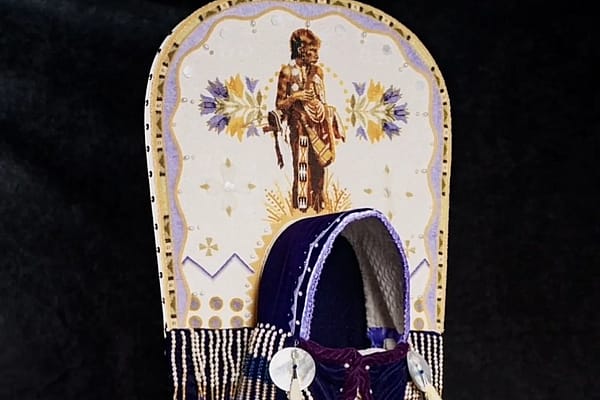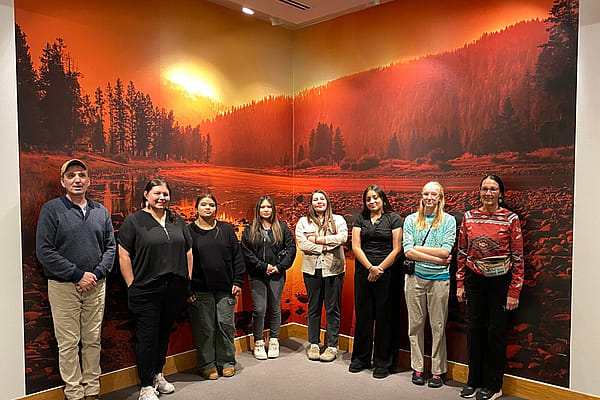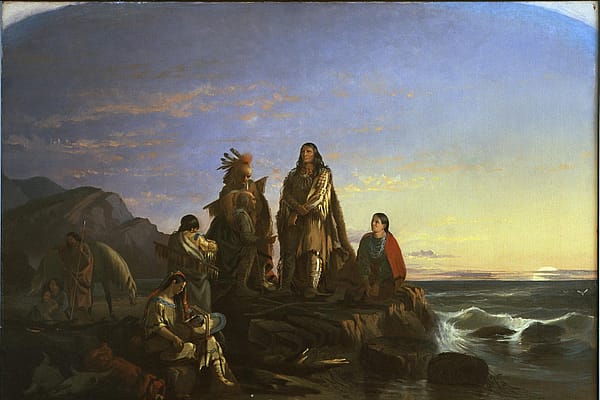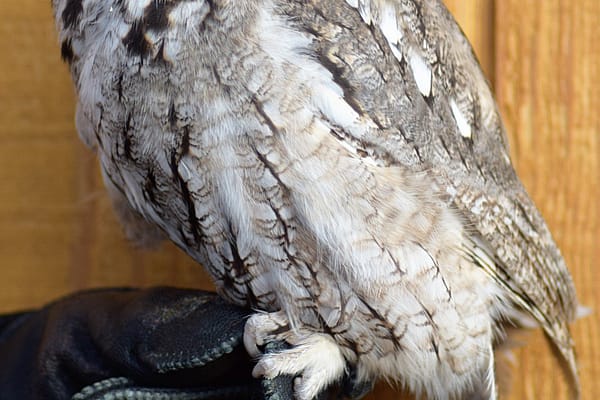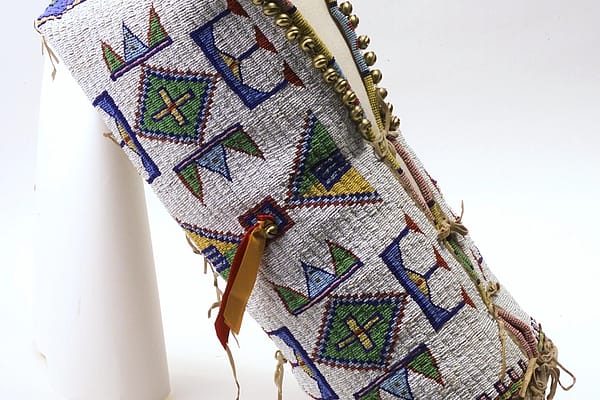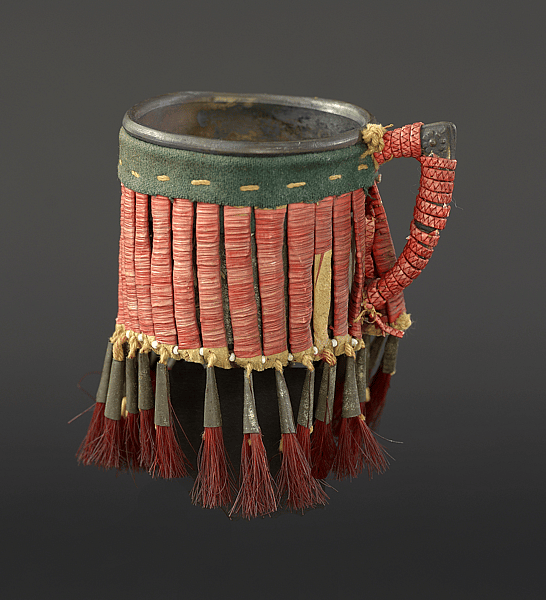
Museum Minute: Artistic Expression Through A Tin Cup
During the Reservation Era, roughly from the 1870s to the 1920s, Native Americans were required to move onto allotments of land. Rebecca West, the curator of the Plains Indian Museum, said it was a time when the United States government followed a policy of extermination and assimilation.
“With that came drastic changes in lifestyle, losses of basic freedoms we take for granted…being able to move at will, freedom of religions, speaking your own language, artistic and cultural expression,” said West.
She said arts and cultural traditions were some of the things that kept people going spiritually as a community. This was done by taking artistic traditions and combining them with newer materials that were being introduced like tin cups, annelied dyes and wool cloth as opposed to older materials like buffalo hide and natural pigments.
A highly decorated Lakota tin cup from about 1900 is a perfect example of this.
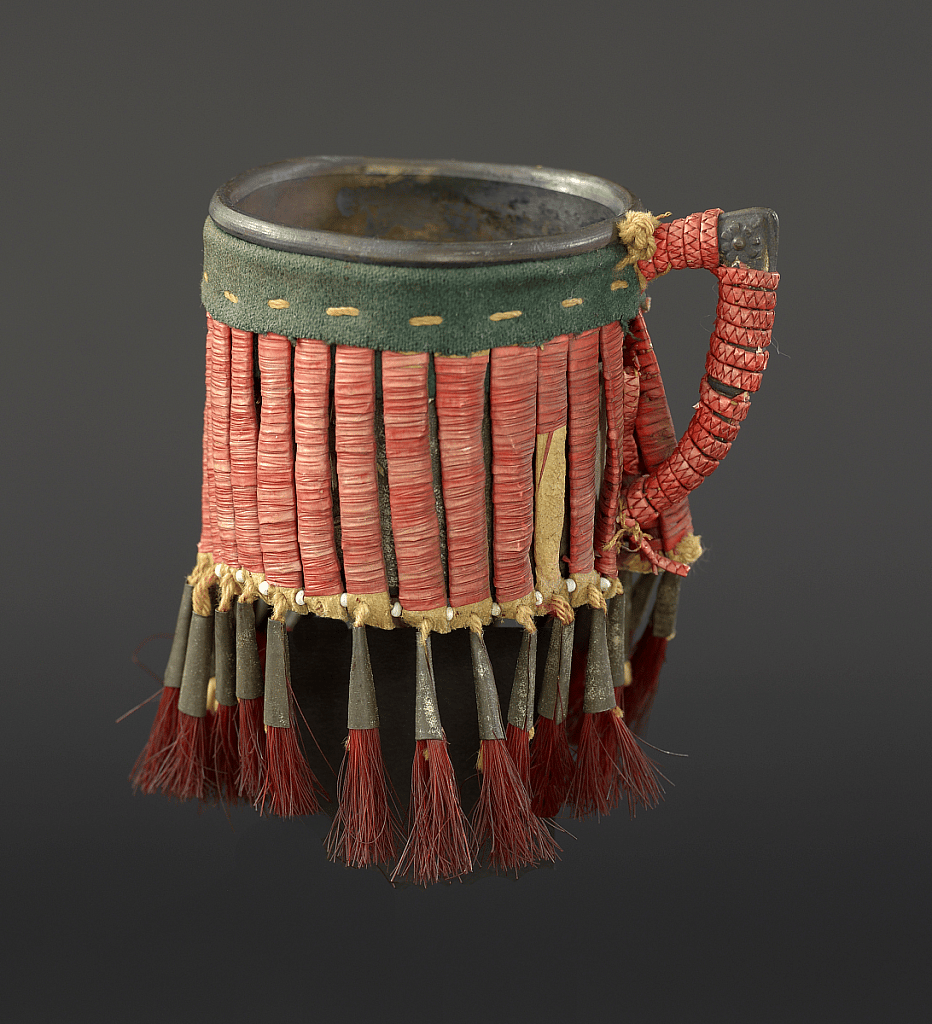
“What makes it special is the fact that it is so highly decorated with quilled porcupine strips. It has tin coins with dye horse, haired tassels. It has some fabric trim and stitching and all of these little details.”
West said it’s impossible to put the cup down because of the way it is constructed with the tassles. So she said it’s almost symbolic.
“If you can imagine someone picking it up, using it themselves, or offering it to other people without putting it down or storing,” West said. “It’s one of those things that’s meant to be held and showed off as opposed to be used as an everyday utilitarian type of thing.
Museum Minute was a series co-produced with Wyoming Public Media (WPM).
Written By
Kamila Kudelska
Kamila Kudelska was the multimedia journalist for the Center and for Wyoming Public Media. In that role she told the hidden stories of all five museums and reported on the news of northwest Wyoming. Kamila has worked as a public radio reporter in California, Poland and New York. She enjoys skiing (both downhill and crosscountry) and loves to read. Since has since taken on a larger role with Wyoming Pubic Media.

